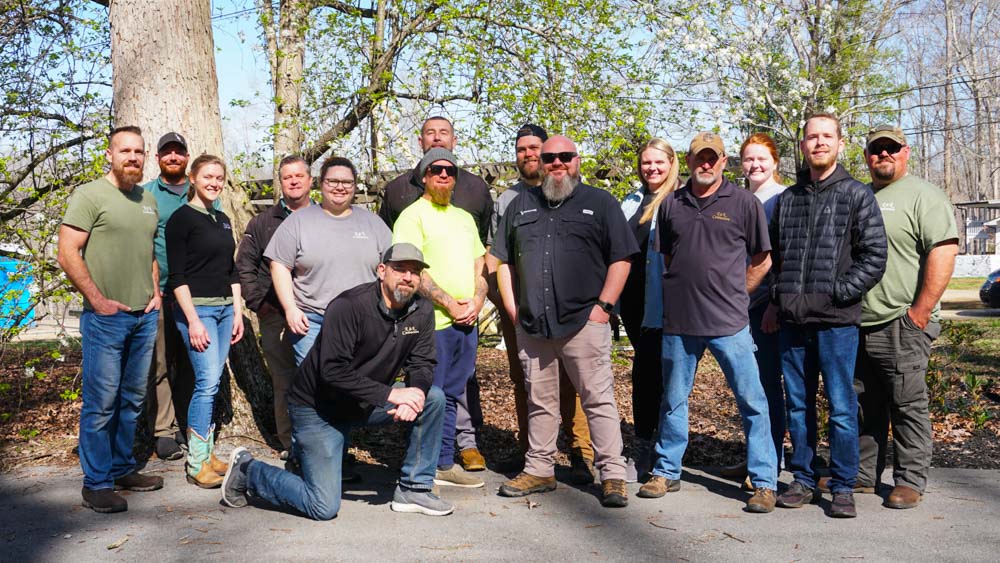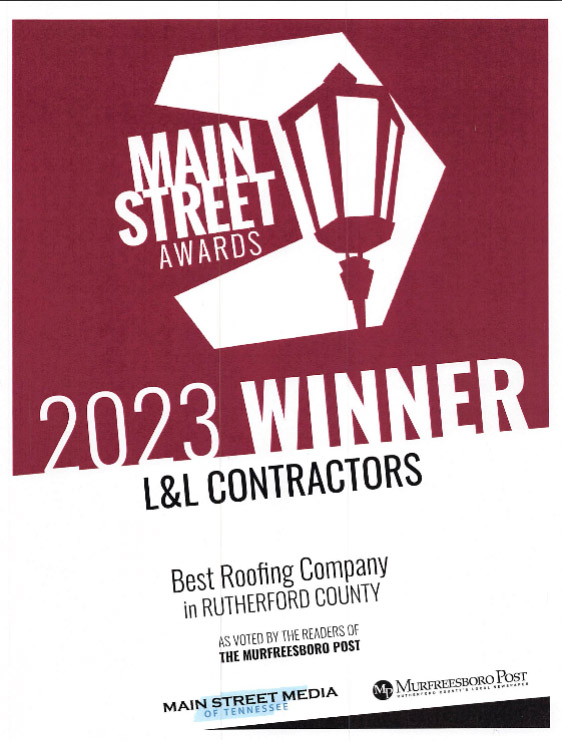You may wonder, which is better for your home: James Hardie or vinyl siding? When you’re looking to make a decision, there are four factors to consider: cost, durability, maintenance, and appearance. By keeping these four things in mind, you will be able to choose a siding that meets all of your home’s needs, as well as keeping your aesthetic wants in consideration.
Ultimately, when it comes to two of the most popular siding options—James Hardie or Vinyl—there is one clear winner. In this article, we will explore each type of siding and evaluate what they offer based on our 18+ years of experience serving homeowners in Middle Tennessee for all their home exterior needs.
What is the difference between vinyl and James Hardie siding?
If you’re new to the home building or exterior renovation process, you might think that all siding is the same. This couldn’t be further from the truth. Vinyl and James Hardie siding are actually incredibly different, and understanding those differences is an important first step in determining which is the best choice for your home.
In the early 20th century, homes were typically made of brick, wood, or stone, with siding typically referencing shingles or aluminum. But with the baby boom of the 1950s, more homes needed to be built, leading to the creation of vinyl siding as an affordable construction solution. Vinyl siding is made of PVC, the same type of hard plastic used for some pipes. It is most often laid in a horizontal fashion, done to mimic wood clapboard. Due to innovation in the vinyl space, it now has a consistent look from home to home, and is one of the most popular siding choices. It also comes already colored, so you don’t need to worry about painting.
James Hardie began making asbestos-free home renovation products made of fiber cement in the 1980s, which were brought over to the U.S. from Australia in the 1990s. It quickly became an industry leader, and the standard in fiber cement siding products. The biggest difference between Hardie siding and vinyl lies in the materials. As previously mentioned, Hardie siding is fiber cement, which is made out of a simple list of organic materials: cement, sand, water, and cellulose fibers. These materials allow for it to be naturally thicker than vinyl, leading to many durability advantages. Like vinyl, Hardie siding can come pre-colored, but it can also come primed and ready to be painted by you.
Pros and Cons of Hardie vs Vinyl Siding
Cost
The first thing you are most likely considering when it comes to choosing which siding is best for you is cost. Upfront, vinyl is cheaper than HardiePlank®. On average, costs for vinyl installation range from $3-12 per square foot, whereas Hardie siding installation is $5-14 per square foot. This is based on two factors: materials and labor. In terms of materials, vinyl is cheaper, considering it is made from PVC. Since Hardie siding is made from heavy duty organic materials like cement, it is also naturally thicker and much heavier than vinyl siding. This makes Hardie the more expensive option to install, since it requires more care and expertise to be installed properly, as well as more laborers due to its weight.
You may be concerned about the difference in the initial costs, but these upfront costs that come with Hardie siding lead to long-term savings. First off, it is easier to repair Hardie siding. If vinyl siding gets damaged, replacing a panel can be complicated, increasing costs. With Hardie siding, replacing single boards or planks is simple, and won’t need to be done often due to their durability. When it’s time to sell, James Hardie is also the clear winner. James Hardie siding has an 88.4% return on investment on average, compared to vinyl’s 80.2% average return, showing that high quality materials really are worth the investment.
Durability
As mentioned previously, HardiePlank® is longer lasting than vinyl siding, but you may be wondering how much more durable it really is. There are multiple durability issues that homeowners face with vinyl siding that are solved by James Hardie. With weather patterns changing across the country, now is the time to start considering how your siding would hold up to extreme weather.
Let’s begin with extreme heat and wildfire. If you have vinyl siding, you can probably tell that it isn’t resistant to heat. For instance, the most obvious symptom of this is warping due to patio barbecues. This warping may seem like only an inconvenience to those living in cooler climates, but it should ring alarm bells for those in wildfire zones. Vinyl melts when exposed to high heat, allowing for your internal walls, which tend to be more flammable, to be exposed and catch fire as well. In addition, vinyl siding releases toxic gasses and carcinogens into the air when it burns. Hardie siding, on the other hand, features a Class A fire rating, is noncombustible, and has a flame spread index of zero. This makes Hardie siding the obvious choice if you live in a region prone to wildfires.
On the opposite end of the spectrum, cold climates also can also experience siding damage from snow and freezing temperatures. Vinyl becomes brittle in colder temperatures, and can even crack in winter months. This cracked, brittle vinyl will need to be replaced, leading you to spend money on repairs that could be going elsewhere. Hardie siding doesn’t experience this weakening, and its thick construction prevents it from being dented by falling ice or losing its shape under snowdrifts.
Hardie siding is also water-resistant, and is certified by FEMA as flood resistant due to its durability amidst heavy rainfall and floodwater. You can experience weather that can only be resisted by durable siding materials. Only James Hardie offers two different “zones” of product, allowing for you to choose the Hardie siding that is engineered for your unique climate concerns.
Maintenance
In addition to being durable, the other quality many homeowners look for in siding is that it will be low maintenance. Having to constantly clean, repair, or repaint your home can not only be time consuming, but costly, since you most likely will have to hire a professional for some of these jobs. Two of the greatest maintenance concerns are color fading and siding becoming mucky with mold or moss. In both of these categories, James Hardie is the clear winner against vinyl.
One of the biggest concerns with vinyl is that the color has a tendency to fade away. Vinyl experiences this for a few reasons: UV rays, water, and oxidation. UV rays are constantly hitting your home, and with time, lead to colors to fade. You can even see this inside your home: if you have a painting receiving direct sunlight all day, it fades much faster than a painting in a room with no windows. If that can happen indoors, imagine the intensity of that effect outside. In addition to UV rays, rainfall can wash away coats of paint or protective seal if it’s powerful enough. Snowfall can be even worse, combining the negative impacts of moisture with the heightened reflection of UV rays. Lastly, air will eventually oxidize, or react with the chemicals in vinyl siding, leading to fading and chalkiness.
For color fading, James Hardie has developed ColorPlus® Technology that is coated to protect the color from the sun’s UV rays, a unique and exclusive feature that ensures that your home’s color will last. This is enhanced by their “zone” system, which allows for your siding to be engineered with the elements in mind, preventing rain or snowfall from damaging your siding. In addition to this, they also offer a 15-year limited warranty if your home experiences any chipping or peeling.
Vinyl siding’s lack of durability and tendency to crack or warp has other consequences too. Siding that becomes warped opens up the siding, allowing for it to harbor moisture. This extra moisture will eventually lead to mold growth. This can also happen if your vinyl siding is improperly ventilated, since lack of ventilation traps heat and causes moisture. As mentioned previously, Hardie siding is resistant to moisture, rot, and water damage, allowing you to help cull mold growth before it begins. Of course, no siding is entirely maintenance free though, so be sure to give any siding you choose a good clean once a year.
Appearance
Although all of the characteristics mentioned above are important, what are they worth if your house doesn’t exude curb appeal? Fortunately, a beautiful exterior is a given when you choose James Hardie siding. Initially, vinyl siding was designed to imitate traditional, horizontal wood clapboard, and that is still the most popular vinyl siding choice today. But over the years, both vinyl and Hardie have expanded to accommodate dozens of different styles, from board and batten to shingles. But when it comes to styles meant to mimic wood, James Hardie is the clear winner. This is because Hardie siding is significantly thicker than vinyl, having a thickness on par with wood siding. The siding being naturally thicker allows for the ridging done to siding to make it appear like wood grain to be deeper, which makes Hardie siding look like real wood. If you don’t want siding that is designed to look like wood, Hardie is also the winner, since it comes in stucco, which vinyl does not. Hardie stucco is perfect if your home is built in a Mediterranean or English Tudor style.
Not only is Hardie siding the right choice when it comes to curb appeal due to its realistic finish, but also because of their color selection. Like vinyl, Hardie comes in pre-painted options, but Hardie also offers a primed-for-paint option if you would rather paint your home a custom color. Hardie siding is also much easier to paint over if you are ever looking to refresh your home. But once you see the pre-painted options James Hardie offers, it is very likely you will choose and love a color they already offer! They offer dozens of colors and various different tones to perfectly match your home’s architectural style and surroundings. On top of all that, they also have a collaboration with Magnolia Home, giving you the opportunity to choose siding that is Joanna Gaines approved.
Scheduling Nashville Siding Consultation with L&L Contractors Today
That concludes our James Hardie vs. Vinyl siding comparison. At L&L Contractors, we understand how important it is to select the right siding for your home. That’s why we are committed to providing you with expert siding advice that you can trust measured by the SQFT: service, quality, family and trust.
If you’re looking to learn more about siding options, schedule a consultation with us today, or call us at (615) 724-4905. We proudly serve the Middle Tennessee community, including Brentwood, Franklin, Murfreesboro, for all your siding needs.











